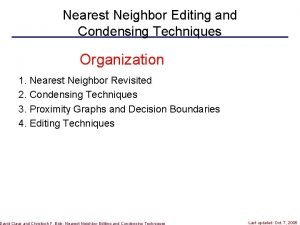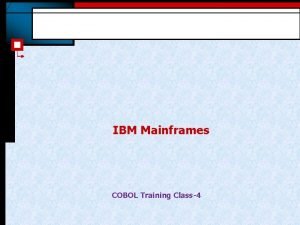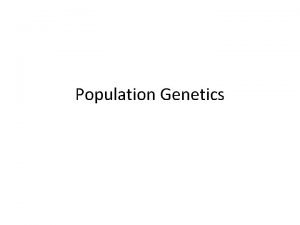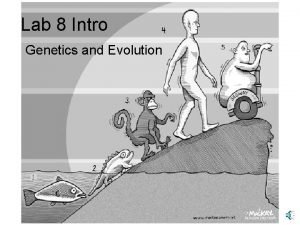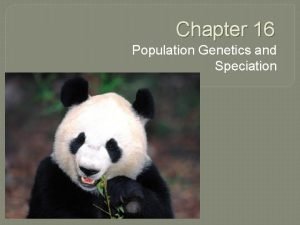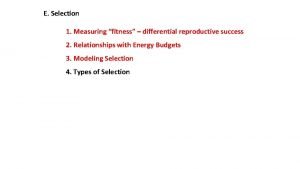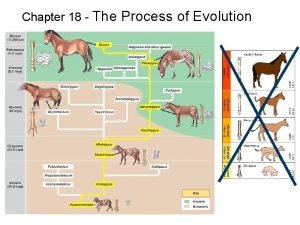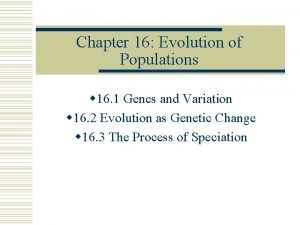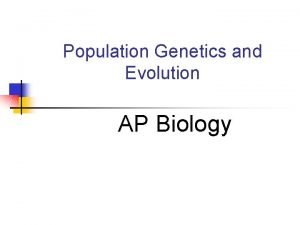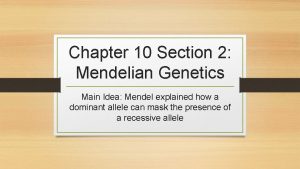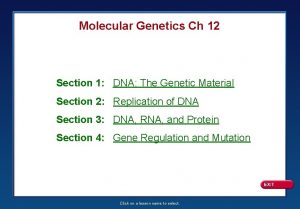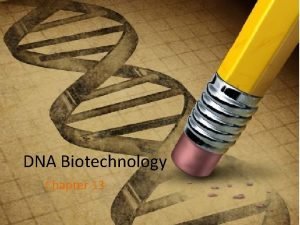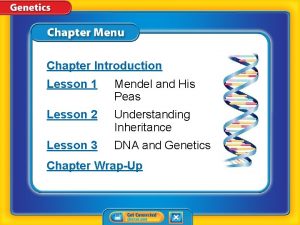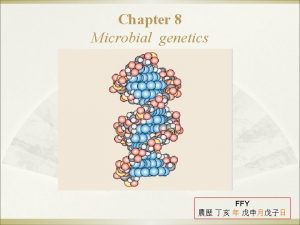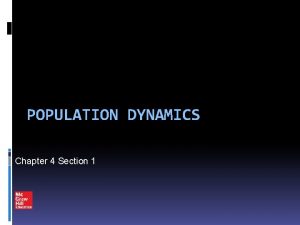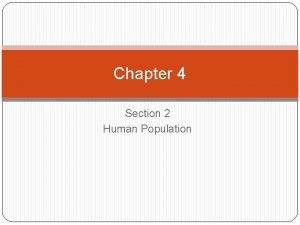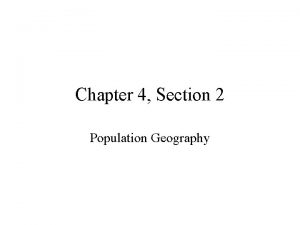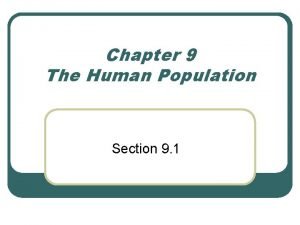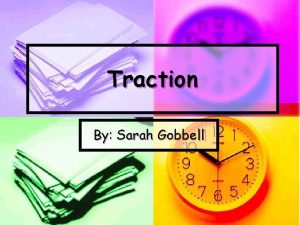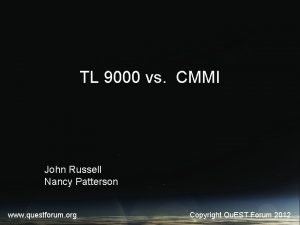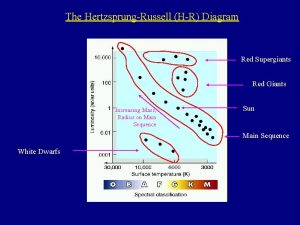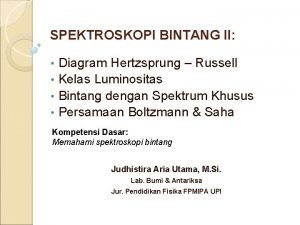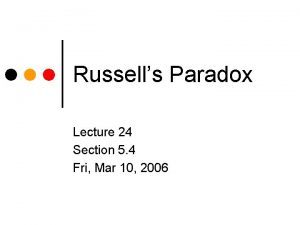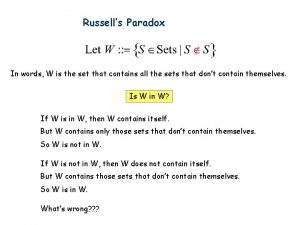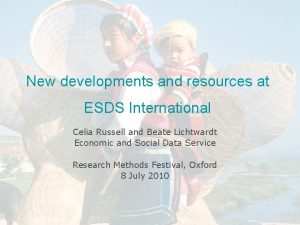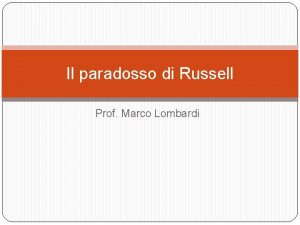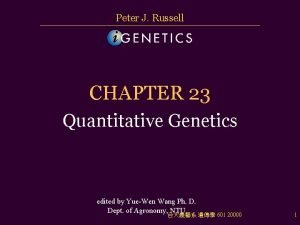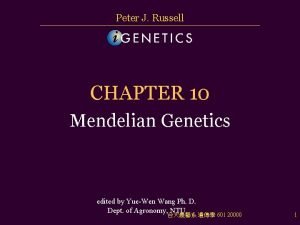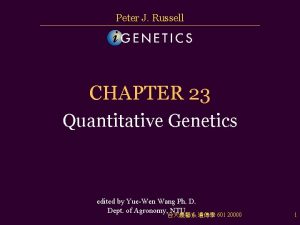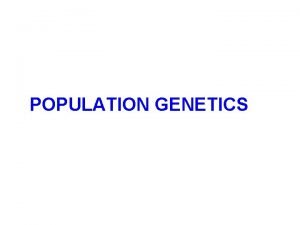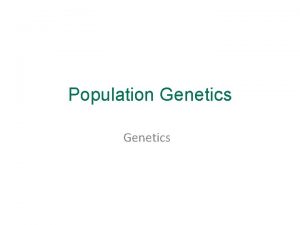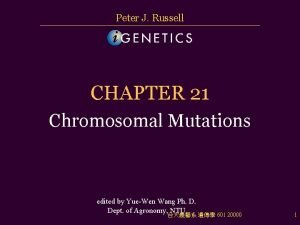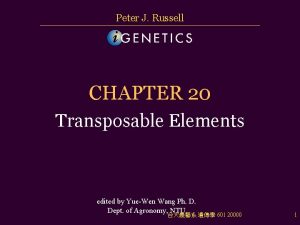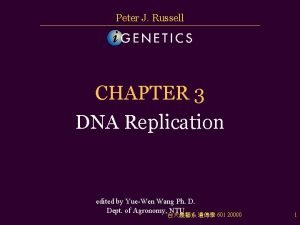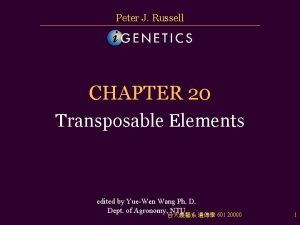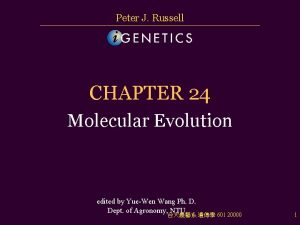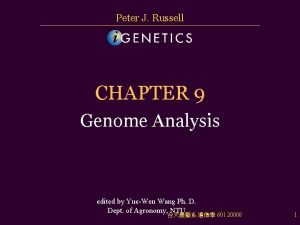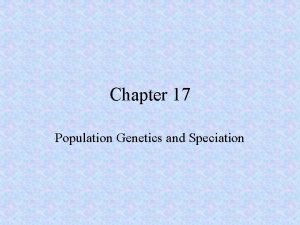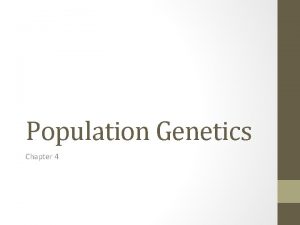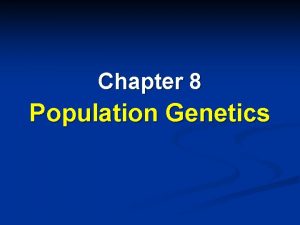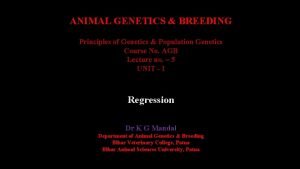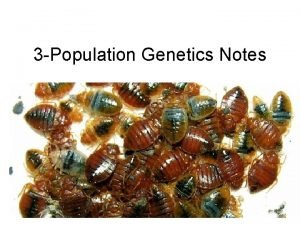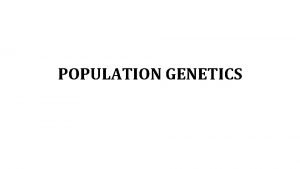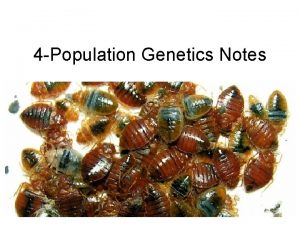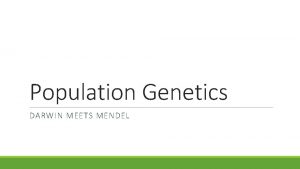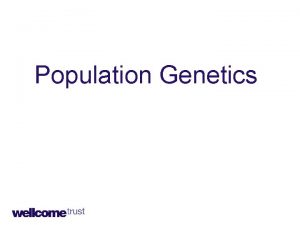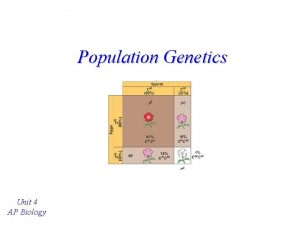Peter J Russell CHAPTER 22 Population Genetics edited


























































- Slides: 58

Peter J. Russell CHAPTER 22 Population Genetics edited by Yue-Wen Wang Ph. D. Dept. of Agronomy, 台大農藝系 NTU 遺傳學 601 20000 1

Introduction 1. Population genetics is the field of genetics that studies heredity in groups of individuals for traits that are determined by one, or only a few genes. (Polygenic traits, determined by combinations of many genes, are discussed in the next chapter, Quantitative Genetics. ) 2. Both Population and Quantitative Genetics use Mendelian principles, and both are amenable to mathematical treatment. 3. These areas of genetics have been important in the fusion of Mendelian theory with Darwinian theory to create the neo-Darwinian synthesis that underlies much of current biological thinking (Figure 22. 1). 4. Population geneticists study the genetic structure of populations, and how they change geographically and over time. 5. A Mendelian population is a group of interbreeding individuals who share a common set of genes. The total of alleles in the population constitutes the gene pool. 6. Modern molecular biology techniques have allowed for rapid advancement in population genetics. 7. Mathematical models are often developed in population genetics. The Hardy. Weinberg law is a major example. 台大農藝系 遺傳學 601 20000 2


Genetic Structure of Populations Genotypic Frequencies 1. Genotypic frequencies are a way to study the genes in a particular gene pool by quantifying the genotypes (pairs of alleles) at a given locus. 2. To calculate genotypic frequency, count individuals with one genotype, and divide by total individuals in the population. Repeat for each genotype in the population. 3. A frequency is a proportion with a range of 0– 1. If 43% of population has a trait, the frequency of that trait is 0. 43. For any given trait, the sum of the genotypic frequencies in a population should be 1. Spot patterns on the moth Panaxia dominula are an example (Figure 22. 2). 台大農藝系 遺傳學 601 20000 4



Allelic Frequencies 1. Allelic frequencies give more information about the structure of the population than genotypic frequencies. Allelic Frequency= No. of copies of a given allele / Sum of counts of alleles in the population 2. May be calculated in two different ways: a. From observed number of different genotypes at a particular locus. p=f(A)= ((2 x Count of AA) +(1 x count of Aa)+(0 x count of aa)) / (2 x total number of individuals) b. From genotypic proportions. p= f(A)=(Frequency of the AA homozygote) + (1/2)(frequency of the Aa heterozygote) p= f(a)=(Frequency of the aa homozygote) + (1/2)(frequency of the Aa heterozygote) 3. Allelic frequencies at an X-linked locus are more complex because one sex will have only one X-linked allele while the other has two. p=f(XA)=((2 x XAXA females) + (1 x XAXa female) + (1 x XAY male)) / ((2 x number of females)+ (1 x number of males)) p=f(Xa)=((2 x Xa. Xa females) + (1 x XAXa female) + (1 x Xa. Y male)) / ((2 x number of females)+ (1 x number of males)) 台大農藝系 遺傳學 601 20000 7

The Hardy-Weinberg Law 1. This is a simple explanation showing how Mendelian segregation influences allelic and genotypic frequencies in a population. 2. There are three parts to the law: one set of assumptions and two major results. 台大農藝系 遺傳學 601 20000 8

Assumptions of the Hardy-Weinberg Law 1. This law is a simplification of complex events. There are certain assumptions that must be present for the law to apply: a. The population is infinitely large, to avoid genetic drift. (Since this is impossible, large populations are studied when possible since they are mathematically similar to infinite ones. ) b. Mating is random with regard to the trait(s) under study. c. There is no natural selection of the trait(s) under study. d. No mutations occur. e. No migration occurs. 台大農藝系 遺傳學 601 20000 9

Predictions of the Hardy-Weinberg Law 1. If the conditions are met, the population will be in genetic equilibrium, with two expected results: a. Allele frequencies do not change over generations, so the gene pool is not evolving at the locus under study. b. After one generation of random mating, genotypic frequencies will be p 2, 2 pq and q 2, and will stay constant in these proportions as long as the conditions above are met. This is Hardy-Weinberg equilibrium, which allows predictions to be made about genotypic frequencies. 台大農藝系 遺傳學 601 20000 10

Derivation of the Hardy-Weinberg Law 1. Zygotes are formed by random combinations of alleles, in proportion to the abundance of that allele in the population. 2. When a population is in equilibrium, genotypic frequencies will be in the proportions p 2, 2 pq and q 2. This results from the expansion of the square of the allelic frequencies: (p + q)2 = p 2 + 2 pq + q 2. 3. Mendelian principles acting on a population in equilibrium will work to maintain that equilibrium (Table 22. 2). Albinism is an example. 台大農藝系 遺傳學 601 20000 11


Fig. 22. 3 Relationship of the frequencies of the genotypes AA, Aa, and aa to the frequencies of alleles A and a in populations in Hardy-Weinberg equilibrium Peter J. Russell, i. Genetics: Copyright © Pearson Education, Inc. , publishing as Benjamin Cummings. 台大農藝系 遺傳學 601 20000 13

Extensions of the Hardy-Weinberg Law to Loci with More than Two Alleles 1. Often more than two alleles are possible at a given locus, and the frequencies of possible genotypes are still given by the square of the allelic frequencies. 2. If three alleles are present (e. g. , alleles A, B and C) with frequencies p, q, and r, the frequencies of the genotypes at equilibrium will be: (p + q + r)2 = p 2(AA) + 2 pq(AB) + q 2(BB) + 2 pr(AC) + 2 qr(BC) + r 2(CC) 3. Blue mussel population of Long Island Sound (Figure 22. 6) is an example. 台大農藝系 遺傳學 601 20000 14

Extensions of the Hardy-Weinberg Law to Sex. Linked Alleles 1. In species where sex is chromosomally determined, humans or Drosophila for example, females have two X chromosomes while males have only one. In females, Hardy-Weinberg frequencies are the same as for any other locus. In males, frequencies of the genotypes are the same as frequencies of the alleles in the population. 2. Because males receive their X chromosome from their mothers, the frequency of an X-linked allele will be the same as the frequency of that allele in their mothers. For females the frequency will be the average of both parents. 3. With random mating, the difference in allelic frequency between the sexes will be reduced by half in each generation. One generation after allelic frequencies become equal in males and females, the genotypes will be in Hardy-Weinberg proportions. 台大農藝系 遺傳學 601 20000 15

Fig. 22. 4 Representation of the gradual approach Peter J. Russell, i. Genetics: Copyright © Pearson Education, Inc. , publishing as Benjamin Cummings. 台大農藝系 遺傳學 601 20000 16

Testing for Hardy-Weinberg Proportions 1. Data from real populations rarely match Hardy-Weinberg proportions. Use a chi-square test to check whether deviation is larger than expected by chance. 2. If the deviation is larger than expected, researchers begin to study which of the Hardy-Weinberg assumptions is being violated. 台大農藝系 遺傳學 601 20000 17

Using the Hardy-Weinberg Law to Estimate Allelic Frequencies 1. If one or more of the alleles is recessive, one can’t distinguish between heterozygous and homozygous dominant individuals. Can use Hardy-Weinberg law to calculate the allele frequency based on information about the number of homozygous recessive individuals. 26/6000=0. 0043=q 2 q=√ 0. 0043=0. 065 p=1 -q=1 -0. 065=0. 935 Heterozygote (Carrier)=2 pq =2(0. 935)(0. 065) 台大農藝系 遺傳學 601 20000 18

Genetic Variation in Space and Time 1. The genetic structure of populations can vary in space (Figure 22. 6) and time (Figure 22. 7). 2. An allele frequency cline is a clear pattern of variation across a geographic transect, usually correlated with a physical feature like temperature or rainfall. 3. Statistical tools are used to quantify spatial patterns of genetic variation. These are important in conservation biology. 台大農藝系 遺傳學 601 20000 19

Fig. 22. 6 Geographic variation in frequencies of three alleles of the locus coding for the enzyme leucine amino peptidase (LAP) in the blue mussel Peter J. Russell, i. Genetics: Copyright © Pearson Education, Inc. , publishing as Benjamin Cummings. 台大農藝系 遺傳學 601 20000 20

Fig. 22. 7 Temporal variation in the locus coding for the enzyme esterase 4 F in the prairie vole, Microtus ochrogaster Peter J. Russell, i. Genetics: Copyright © Pearson Education, Inc. , publishing as Benjamin Cummings. 台大農藝系 遺傳學 601 20000 21

Genetic Variation in Natural Populations 1. Genetic variation is important in natural populations: a. It determines the potential for evolutionary change and adaptation. b. It provides clues about roles of various evolutionary processes. c. It allows predictions about a population’s chances for long-term survival. 台大農藝系 遺傳學 601 20000 22

Measuring Genetic Variation at the Protein Level 1. Understanding genetic variation in a population was difficult before molecular biology because most phenotypes are the result of multiple genes, and there was no technique available to determine allele frequencies. 2. Protein electrophoresis separates proteins on the basis of size, charge and conformation, and so often can separate the gene products of different alleles. 3. The amount of genetic variation within a population is usually measured by two parameters: a. Proportion of polymorphic loci (those with more than one allele within a population). Proportion is calculated by dividing total of loci with more than one allele by total number of loci examined. b. Heterozygosity (the proportion of an individual’s loci that are heterozygous). Determine for individuals, and then average to obtain estimate of heterozygosity of the population. 4. Proteins with similar sizes and charges will conform in gel electrophoresis, and so allele differences are likely to be underestimated. Even so, much more variation (Table 22. 3) is seen at most loci than would be predicted by the classical model. 5. Kimura proposed the neutral-mutation model, saying that the combination of random mutations and chance fixation of alleles is responsible for some variations that are not functionally different and so are not acted upon by natural selection. However, DNA sequencing has undermined this model. 台大農藝系 遺傳學 601 20000 23


Measuring Genetic Variation at the DNA Level 1. PCR (polymerase chain reaction) allows amplification of DNA regions from many individuals. Fragments may be analyzed for size, restriction sites and DNA sequence. 2. Restriction fragment length polymorphisms (RFLPs) are a quick way to map genes and gain an idea of how many DNA differences occur within a population (Figure 22. 10). Limitation of RFLP analysis is that it only assesses variation in sites for particular restriction enzymes. 3. DNA sequence analysis shows that there is more variation and therefore many more alleles of most genes than previously believed. Different regions will have different levels of variation. Exons are less likely to vary than introns and flanking sequences, and changes within exons are often synonymous. 4. DNA length polymorphisms result from deletions and insertions of short stretches of nucleotides, especially in noncoding regions. Microsatellites or STRPs (short tandem repeat polymorphisms) are very simple repetitive sequences that occur different numbers of times in different individuals. Both are useful in determining genetic variability within a population. i. Activity: Measuring Genetic Variation 台大農藝系 遺傳學 601 20000 25

Fig. 22. 9 DNA from individual 1 and individual 2 differ in one nucleotide, found within the sequence recognized by the restriction enzyme Bam. HI Peter J. Russell, i. Genetics: Copyright © Pearson Education, Inc. , publishing as Benjamin Cummings. 台大農藝系 遺傳學 601 20000 26

Fig. 22. 10 Restriction patterns from five mice Peter J. Russell, i. Genetics: Copyright © Pearson Education, Inc. , publishing as Benjamin Cummings. 台大農藝系 遺傳學 601 20000 27

Forces that Change Gene Frequencies in Populations 1. Few populations are actually in Hardy-Weinberg equilibrium, and so their allele frequencies do change, and evolution occurs. 台大農藝系 遺傳學 601 20000 28

Mutation 1. Usually a mutation converts one allelic form of a gene to another. 2. Mutations may be neutral, detrimental or advantageous, depending on the environment. Environmental changes may favor different alleles than those previously favored. 3. The frequency of alleles in a population is determined by interaction of mutation rates and natural selection. 台大農藝系 遺傳學 601 20000 29

Random Genetic Drift 1. Called “drift” for short. Results from random events in small populations (sampling error). 2. Effective population size is the number of adults contributing gametes to the next generation. Includes the number of breeding females plus the number of breeding males. (Remember that if, for example, one male contributes most of the gametes, his alleles will be present at a higher frequency in the next generation. ) 3. The standard error of allelic frequency is a useful mathematical analysis for understanding the limits of allelic frequency. 台大農藝系 遺傳學 601 20000 30

Fig. 22. 11 Results of Buri’s study of genetic drift in 107 populations of Drosophila melanogaster Peter J. Russell, i. Genetics: Copyright © Pearson Education, Inc. , publishing as Benjamin Cummings. 台大農藝系 遺傳學 601 20000 31

4. Genetic bottlenecks and founder effects arise when populations expand from a small number of ancestors. Even though the population may become large, only the alleles that were present in the ancestors (and those that have arisen by mutation in the meantime) will be present in the population. Examples include: a. the islanders of Tristan da Cunha. b. The Dunker sect in the U. S. (Table 22. 7) 台大農藝系 遺傳學 601 20000 32

5. Effects of genetic drift: a. Allelic frequencies will change over time, and may reach values of 0. 0 or 1. 0. When this occurs, the remaining allele is “fixed” in the population, and only mutation can change its frequency. This reduces the heterozygosity of the population, resulting in reduced genetic variation. b. Individual populations will not necessarily drift in the same direction, and so genetic divergence can result. This may eventually result in speciation. Experimental evidence (Table 22. 8) confirms that there is more variance in allelic frequency among small populations than among large ones. c. Neutral mutations are not subject to natural selection, and may be used to estimate the time elapsed since two species shared a common ancestor. 台大農藝系 遺傳學 601 20000 33

Fig. 22. 12 The effect of genetic drift in the frequency (q) of allele A 2 in four populations Peter J. Russell, i. Genetics: Copyright © Pearson Education, Inc. , publishing as Benjamin Cummings. 台大農藝系 遺傳學 601 20000 34

Fig. 22. 13 The average time to fixation or loss of an allele from population as a function of population size and initial allele frequency as predicted by Kimura Peter J. Russell, i. Genetics: Copyright © Pearson Education, Inc. , publishing as Benjamin Cummings. 台大農藝系 遺傳學 601 20000 35

Balance between Mutation and Random Genetic Drift 1. In a population, mutation adds variation, and random genetic drift removes variation. When these forces are combined, the infinite alleles model predicts that they will balance with each other and a steady state of heterozygosity will result 台大農藝系 遺傳學 601 20000 36

Fig. 22. 14 Relationship between the neutral parameter = 4 Ne and the expected heterozygosity under the infinite alleles models Peter J. Russell, i. Genetics: Copyright © Pearson Education, Inc. , publishing as Benjamin Cummings. 台大農藝系 遺傳學 601 20000 37

Migration 1. While Hardy-Weinberg assumes no migration, many populations are not isolated and will exchange genes with other populations. Genetic migration is about gene movement, rather than actual movement of organisms, and is referred to as gene flow. 2. Gene flow has two major effects on a population: a. May introduce new alleles to a population. b. When migrants have different allelic frequency than recipient population, allelic frequencies will be altered in the recipient population. 3. Gene flow is diagrammed in Figure 22. 15. Note that if gene flow continues, the differences in allelic frequencies between the populations will decrease. 4. Migration increases the effective size of populations, and may prevent allelic fixation. This is important in conservation biology, where fragmentation of habitats may prevent gene flow. 台大農藝系 遺傳學 601 20000 38

Fig. 22. 15 Theoretical model illustrating the effect of migration on the gene pool of a population Peter J. Russell, i. Genetics: Copyright © Pearson Education, Inc. , publishing as Benjamin Cummings. 台大農藝系 遺傳學 601 20000 39


Natural Selection Animation: Hardy-Weinberg and Natural Selection 1. Adaptation is the process by which traits evolve that increase the organism’s chances of surviving to reproduce. Adaptation is mainly the result of natural selection. 台大農藝系 遺傳學 601 20000 41

2. Natural selection is the differential survival of genotypes, and the alleles that survive are more likely to be represented in the next generation. Over time, this increases the adaptation of organisms to their environment. 3. Darwinian fitness is the relative reproductive ability of a particular genotype. It involves both the number of offspring, and their relative fitness. 台大農藝系 遺傳學 601 20000 42

4. Natural selection may result in increasing or decreasing genetic variation, depending on environmental conditions. It can be calculated using the “table method” (Table 22. 9). The premise is that the contribution of each genotype to the next generation will be equal to the initial frequency of the genotype multiplied by its fitness. 台大農藝系 遺傳學 601 20000 43

5. Recessive traits often result in reduced fitness, and so there will be selection against homozygous recessives, decreasing the frequency of the recessive allele, but not eliminating it from the population, because as the allele becomes less frequent it is more likely to be found in a heterozygote, creating a protected polymorphism. 6. Some forms of selection result in maintaining genetic variation. If a heterozygote has higher fitness than either of the homozygotes, allelic frequencies will reach equilibrium and become stable. The relationship between sickle-cell anemia and resistance to malaria is a famous example. 台大農藝系 遺傳學 601 20000 44

Fig. 22. 20 Effectiveness of selection against a recessive lethal genotype at different initial allele frequencies Peter J. Russell, i. Genetics: Copyright © Pearson Education, Inc. , publishing as Benjamin Cummings. 台大農藝系 遺傳學 601 20000 45

Fig. 22. 21 Fitnesses of the genotypes AA, Aa, and aa are 1, 0. 5, and 0. 5, for the dominant case; 1, 0. 75, and 0. 5 for the additive case; and 1, 1, and 0. 5 for the recessive case Peter J. Russell, i. Genetics: Copyright © Pearson Education, Inc. , publishing as Benjamin Cummings. 台大農藝系 遺傳學 601 20000 46

Fig. 22 The distribution of malaria caused by the parasite Plasmodium falciparum coincides with distribution of the Hb-S allele for sickle-cell anemia Peter J. Russell, i. Genetics: Copyright © Pearson Education, Inc. , publishing as Benjamin Cummings. 台大農藝系 遺傳學 601 20000 47

Balance Between Mutation and Selection 1. The balance between mutations and natural selection results in evolution. 2. When an allele becomes rare, its change in frequency with each generation becomes very small. At the same time, mutations occur which produce new alleles and increase the frequency. Eventually equilibrium will be obtained. 3. Selection is continually acting on dominant alleles, but can only act on a recessive ones in homozygotes. Therefore detrimental dominant alleles are generally less common than recessive ones. 台大農藝系 遺傳學 601 20000 48

Assortative Mating 1. Individuals do not always mate randomly. When a particular phenotype is preferred in mates, allele frequencies will be affected. 2. Positive assortative mating occurs when individuals with similar phenotypes mate preferentially. 3. Negative assortative mating occurs when phenotypically dissimilar individuals mate preferentially. 台大農藝系 遺傳學 601 20000 49

Inbreeding 1. Inbreeding is the preferential mating between close relatives. 2. Small populations will show this effect even if there is no tendency to select relatives, because even-chance matings are likely to involve relatives. 3. Self-fertilization is an extreme case of inbreeding seen in many plants and a few animals. Table 22. 13 illustrates the effects. 4. Inbreeding has results similar to genetic drift in a small population. Heterozygosity decreases and homozygosity increases. In large populations, inbreeding will result in constant allele frequencies even though homozygosity increases. 台大農藝系 遺傳學 601 20000 50


Effects of Evolutionary Forces on the Genetic Structure of a Population Changes in Allelic Frequency Within a Population 1. Factors with potential to change allelic frequencies are: a. Mutation, although it occurs at a slow rate and creates a relatively small change in allelic frequencies. b. Migration, which may create major changes in allelic frequencies. c. Genetic drift, which produces substantial changes in small populations. d. Selection, which alters frequencies and continues to act even when equilibrium has been reached. 2. Non-random mating affects genotypic frequencies in a population. Inbreeding increases homozygosity, and decreases fitness if deleterious recessive alleles are present. 台大農藝系 遺傳學 601 20000 52

Genetic Divergence Among Populations 1. Genetic drift can produce divergence among populations. 2. Migration will decrease divergence by encouraging gene flow between populations. 3. Natural selection can either increase divergence by favoring different alleles in different populations, or decrease divergence by selecting against certain alleles. 4. Non-random mating may contribute to the effects of other processes by altering the effective population size. 台大農藝系 遺傳學 601 20000 53

Increases and Decreases in Genetic Variation Within Populations 1. Effects are similar to those among populations (above): a. Migration increases genetic variation. b. Mutation also increases variation. c. Genetic drift decreases variation due to loss of alleles. d. Inbreeding decreases variation. e. Natural selection may either increase or decrease genetic variation, depending on the environment and other circumstances. f. All of these effects combine within a population in complex ways to determine an overall pattern of genetic variation. 台大農藝系 遺傳學 601 20000 54

The Role of Genetics in Conservation Biology 1. Human activities are reducing the available habitat and altering the environment for many species, resulting in declining numbers and escalating rates of extinction. Intelligent conservation efforts must consider survival of gene pools, as well as survival of individuals. 2. Population viability analysis is used to determine how large a population needs to be to prevent extinction within a set period of time. An adequate gene pool is needed to ensure the potential for the population to evolve over time. 3. Inbreeding has occurred in zoos and game management programs, and is now a recognized concern in developing conservation strategies. 4. Until habitat destruction is addressed, genetic conservation efforts can only slow the depletion of gene pools and the loss of species that will inevitably result. 台大農藝系 遺傳學 601 20000 55

Speciation 1. When populations are subdivided to the point that they never interbreed, different alleles will become fixed in the subpopulations over time. 2. If the subpopulations are then reunited, they may fail to mate or may produce hybrids of low fitness. 3. Understanding which genes are involved in reproductive isolation requires an understanding of basic principles of speciation. 台大農藝系 遺傳學 601 20000 56

Barriers to Gene Flow 1. Barriers to gene flow eventually arise between isolated populations, preventing interbreeding. There are two major categories of barriers: a. Post-zygotic barriers usually arise first, resulting in poor fitness of offspring (often including infertility). b. Pre-zygotic barriers that prevent mating result when alleles of individuals that discriminate in mating become increasingly frequent in the population. 2. In this reinforcement model, post-zygotic isolation leads to pre-zygotic isolation. The genes potentially involved include those for: a. Temporal isolation, with different mating or activity periods preventing mating between the populations. b. Ecological isolation, with each population in a distinct niche and therefore spatially isolated. c. Behavioral incompatibility, allowing the two species to recognize and avoid each other as mates. d. Mechanical isolation, in which the genitalia of the two populations do not fit together. e. Gametic isolation, in which gametes from different populations do not fuse correctly. 3. Pre-zygotic isolation accelerates the rate of divergence, with strong selection against interspecies mating resulting in a complete barrier to gene flow. 台大農藝系 遺傳學 601 20000 57

Genetic Basis for Speciation 1. In species that display post-zygotic isolation: a. Hybrid males (the heterogametic sex) are usually sterile. b. Hybrid females (the homogametic sex) are often fertile. c. This is Haldane’s Rule (after J. B. S. Haldane). 2. Crosses between species of Drosophila are an example: a. The F 1 of a cross between D. simulans and D. mauritiana will include: i. Females that are viable and fertile. ii. Males that are sterile. b. Backcrossing the F 1 females to D. simulans males will produce some fertile male offspring. c. These types of experiments show that many genes are involved in the fertility of male hybrids. 3. Abalone provide another example of prezygotic isolation. a. Sperm and eggs of more than one species may co-occur. b. Eggs allow penetration only by conspecific sperm due to specific molecular interactions between the sperm protein lysin and the egg glycoprotein VERL. c. Lysin and VERL molecules in abalone display rapid adaptive evolution. 台大農藝系 遺傳學 601 20000 58
 Edited nearest neighbor
Edited nearest neighbor Arithmetic verb
Arithmetic verb Check protection symbol in cobol
Check protection symbol in cobol Section 1 population dynamics answer key
Section 1 population dynamics answer key Study guide section 1 population dynamics
Study guide section 1 population dynamics What is fst
What is fst Genetics
Genetics Population genetics and speciation worksheet answer key
Population genetics and speciation worksheet answer key Population genetics
Population genetics Population genetics
Population genetics Population genetics
Population genetics Population genetics definition
Population genetics definition Section 1 population dynamics
Section 1 population dynamics Population ecology section 1 population dynamics
Population ecology section 1 population dynamics Chapter 10 sexual reproduction and genetics
Chapter 10 sexual reproduction and genetics Codominant biology definition
Codominant biology definition Chapter 22 genetics and genetically linked diseases
Chapter 22 genetics and genetically linked diseases Chapter 12 section 1: dna: the genetic material
Chapter 12 section 1: dna: the genetic material Chapter 12 molecular genetics
Chapter 12 molecular genetics Chapter 10 section 2: mendelian genetics
Chapter 10 section 2: mendelian genetics Chapter 7 vocabulary practice extending mendelian genetics
Chapter 7 vocabulary practice extending mendelian genetics Chapter 10 sexual reproduction and genetics
Chapter 10 sexual reproduction and genetics Molecular genetics chapter 12
Molecular genetics chapter 12 Chapter 7 extending mendelian genetics
Chapter 7 extending mendelian genetics Mendelian genetics vocabulary
Mendelian genetics vocabulary Genetics and biotechnology chapter 13
Genetics and biotechnology chapter 13 Solid
Solid Exogenote
Exogenote Chapter 17 the beginning of the life cycle
Chapter 17 the beginning of the life cycle Whats a density independent factor
Whats a density independent factor Chapter 53 population ecology
Chapter 53 population ecology Chapter 4 section 2 human population answer key
Chapter 4 section 2 human population answer key Chapter 4 section 2 human population answer key
Chapter 4 section 2 human population answer key Equilibrial life history
Equilibrial life history Chapter 4 population ecology answer key
Chapter 4 population ecology answer key Chapter 53 population ecology
Chapter 53 population ecology Chapter 4 section 2 population geography
Chapter 4 section 2 population geography Key issue 3 why do some places face health challenges
Key issue 3 why do some places face health challenges Chapter 53 population ecology
Chapter 53 population ecology Chapter 9 the human population section 1
Chapter 9 the human population section 1 What is the horror genre by sharon russell answers
What is the horror genre by sharon russell answers Bryant traction
Bryant traction Iso 9001 vs cmmi
Iso 9001 vs cmmi Value philosophy
Value philosophy The plot against people
The plot against people Russell chuderewicz penn state
Russell chuderewicz penn state Red supergiant hr diagram
Red supergiant hr diagram Eportfolio fph
Eportfolio fph Dr stuart russell
Dr stuart russell Diagram bintang
Diagram bintang Fundador de los testigos de jehova charles taze russell
Fundador de los testigos de jehova charles taze russell Russell’s paradox
Russell’s paradox Russell's paradox
Russell's paradox Bertrand russell on denoting
Bertrand russell on denoting Celia russell
Celia russell Marco lombardi unimi
Marco lombardi unimi According to russell, how can one avoid foolish opinions?
According to russell, how can one avoid foolish opinions? H r diagram worksheet
H r diagram worksheet Russell wallace day
Russell wallace day
